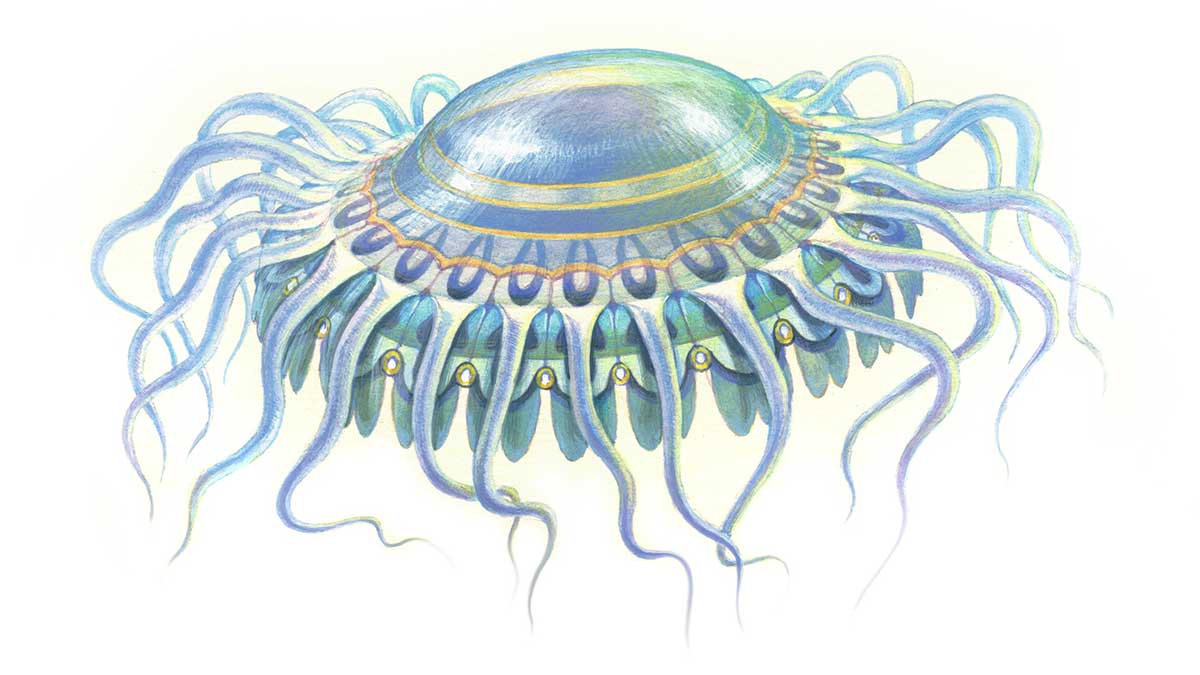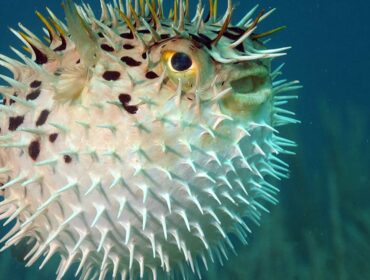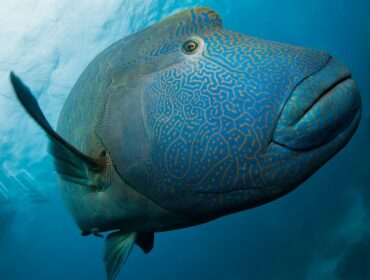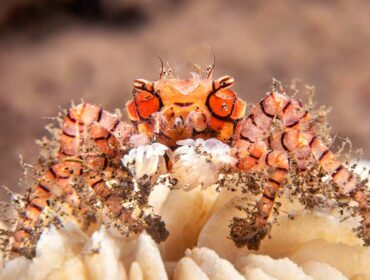Jellyfish are some of the sea’s most extraordinary creatures. When you consider that they’ve inhabited our planet’s oceans for over 500 million years, and the fact that most jellies do not have digestive, respiratory, circulatory, or central nervous systems — or even a brain — it kind of makes you stop and wonder why we’re searching for life on other planets when we’ve yet to nail down how such an amazing biological feat is possible on our own. The sheer number of adaptations each species has made over their extensive time on Earth is nothing short of mindblowing, especially those that live in the deepest reaches of the sea. One of the most incredible of these is Atolla wyvillei, or the Atolla jellyfish.
What is the atolla jellyfish?
The Atolla jellyfish is a deep-sea dweller, found in the mesopelagic and bathypelagic zones of the ocean, where sunlight barely reaches. Its preferred habitat lies between 300 to 1,500 meters (roughly 1,000 to 5,000 feet) below the surface. These depths remain largely unexplored by humans, making any encounter with this ethereal creature even more extraordinary.
This factor has not stifled life, however, as the species that inhabit this region have adapted special functions and behaviors that not only help them conserve energy and find food, but protect themselves from other predators lurking in the dark as well.
Bioluminescent Brilliance
One of the most captivating features of the Atolla jellyfish is its bioluminescence. When threatened or disturbed, this jellyfish employs a brilliant survival strategy to fend off predators. It lights up in a mesmerizing display of greenish-blue luminescence, illuminating the surrounding waters and creating a dazzling spectacle.
The bioluminescence serves two main purposes: to confuse predators and to attract larger predators to the scene. When the Atolla jellyfish feels threatened, it emits a series of glowing rings, which create the illusion of multiple jellyfish, making it difficult for predators to determine its actual size and location. This deceptive tactic buys the jellyfish precious time to escape potential danger.
Simultaneously, the bright light serves as a beacon for larger predators. Attracted to the source of light, these predators are lured to the scene, where they might find another predator attacking the jellyfish. This diversion allows the Atolla jellyfish to make a hasty retreat while the larger creatures engage in their own battle.

Reproductive Cycle
The reproductive cycle of the Atolla jellyfish is equally fascinating. Like other jellyfish species, they undergo a two-stage life cycle: the polyp stage and the medusa stage. During the polyp stage, the jellyfish exists in a benthic, or bottom-dwelling, form. It anchors itself to the seafloor and reproduces asexually, creating new jellyfish through budding.
Once the jellyfish reaches maturity, it enters the medusa stage, where it takes on the familiar bell-shaped appearance we associate with jellyfish. In this stage, they are free-swimming and can move about the ocean currents.
Habitat
Encountering an Atolla jellyfish underwater is a reminder of the delicacy and complexity of deep-sea ecosystems. These creatures are part of a finely tuned balance that sustains life in the dark abyss. As predators, prey, and scavengers, they play a vital role in nutrient cycling and energy transfer in the ocean depths.
However, the very ecosystem that supports the Atolla jellyfish is under threat due to various human-induced pressures, such as climate change, overfishing, and pollution. The delicate balance of this underwater realm is at risk, and it highlights the importance of responsible and sustainable practices to protect these vital habitats.
The Experience of Witnessing the Atolla Jellyfish
For those fortunate enough to encounter the Atolla jellyfish during a scuba diving expedition, the experience is nothing short of magical. Floating in the deep, surrounded by darkness, and suddenly witnessing the bioluminescent display of an Atolla jellyfish can leave even the most seasoned divers in awe.
As divers, we have a responsibility to protect and preserve these breathtaking underwater wonders. By adhering to best practices and respecting marine life and their habitats, we can ensure that future generations will also have the privilege of encountering the Atolla jellyfish and other marine marvels.
Frequently Asked Questions
No, Atolla jellyfish are not known to be poisonous. They rely on their bioluminescence and deceptive tactics to deter predators instead of using venom for defense. Their mesmerizing light displays and unique behaviors make them fascinating creatures in the deep sea.
Atolla jellyfish survive through their unique bioluminescent defense mechanism. When threatened, they emit glowing rings, confusing predators and attracting larger ones to divert attention. Their survival also depends on the delicate balance of deep-sea ecosystems where they play vital roles as predators, prey, and contributors to nutrient cycling.
Conclusion
The Atolla jellyfish is an extraordinary creature that thrives in the mysterious depths of the ocean. Its bioluminescent brilliance and intriguing behaviors make it a captivating subject for divers and researchers alike. Yet, it also reminds us of the fragility of deep-sea ecosystems and the importance of conservation efforts to safeguard these enchanting marine environments. As we continue to explore the wonders of the ocean, let us do so with a sense of wonder and responsibility, cherishing the beauty of creatures like the Atolla jellyfish and striving to protect their underwater home for generations to come.





